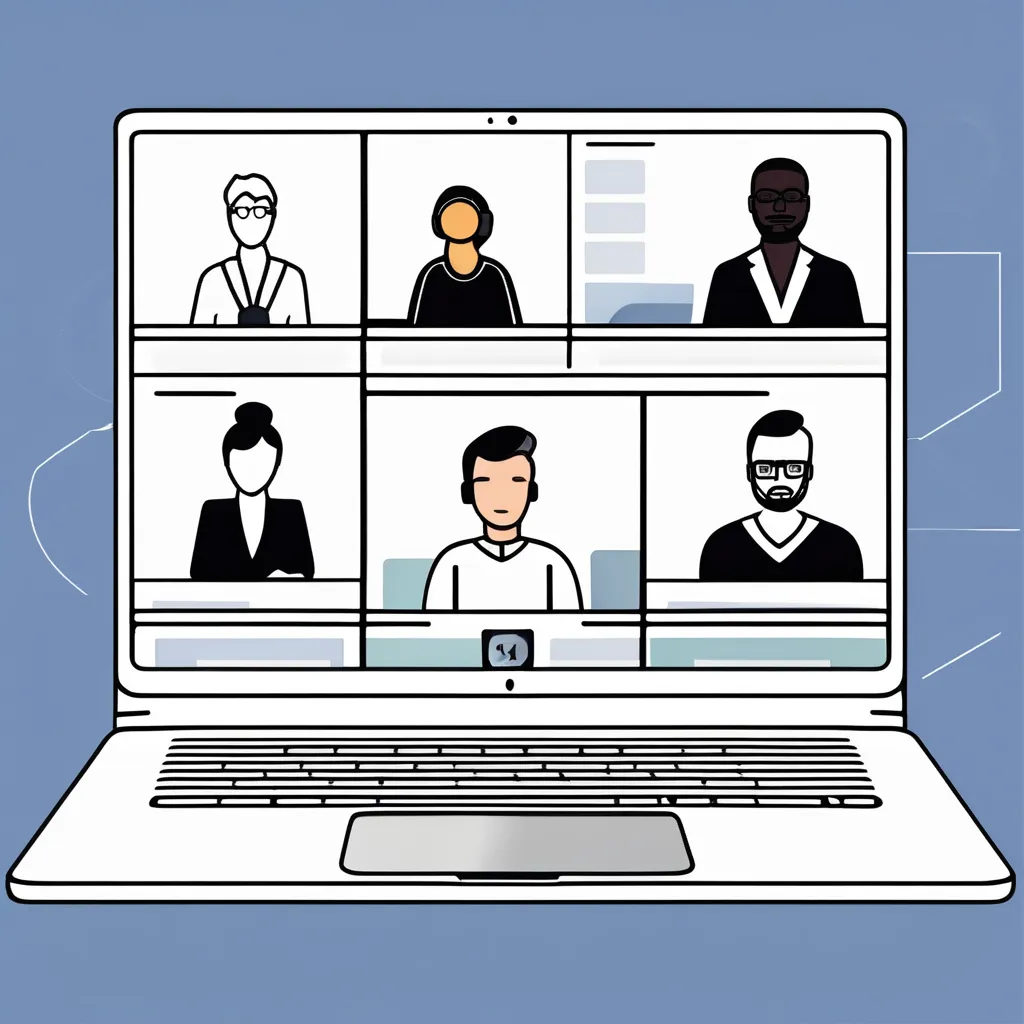Mastering Remote Collaboration — Insights from a Design Systems Team
- Published on
Back in 2020, COVID-19 transformed our work lives, unexpectedly enabling our collaboration with the whole team: Varya, Irina, Alexandra, Andriy, and Sheriff. While some are returning to offices, we believe remote work remains highly effective, particularly for collaborative tasks like design systems development.

Our team has successfully completed over five projects entirely remotely, including collaborations with clients who also operated remotely. This experience has taught us that making remote work successful requires specific organizational strategies. Recently, I reflected on what made our process so smooth, and here are our key insights:
Effective Communication Channels
When initiating a new project, establishing effective communication channels is crucial. Although we typically have an advantage as an existing team, ensuring seamless communication remains a top priority. Clients frequently commend us on how much smoother projects progress when we join as a cohesive unit.
We adapt to our clients' preferred tools, whether it's Microsoft Teams, Slack, or other messaging platforms. If a client doesn't have a preference, we utilize our own Slack channel. Daily check-ins are vital, though not necessarily every day; we typically schedule them a few times a week, depending on the project's scope. Weekly meetings involving both our team and the client's team are essential for alignment.
For teams working in sprints, we regularly demonstrate our progress. Simultaneously, we stay informed about developments in the client's products to maintain context. Encouraging asynchronous updates keeps communication channels active and helps prevent misunderstandings, ensuring everyone remains on the same page.
Leveraging and Adopting Tools
The importance of having the right tools and skilled team members cannot be overstated. Essential platforms like GitHub and Figma form the backbone of our workflow. We make a concerted effort to share new knowledge regularly within our team.
With the rise of AI in coding and design, tools like GitHub Copilot and ChatGPT are becoming increasingly prevalent. We stay updated on the latest technologies and share these insights with our clients, ensuring efficient and effective work. When adopting new tools, our focus is always on seamless collaboration and maintaining consistency in design and code.
Remote Design and Code Reviews
Addressing a crucial practical challenge, organizing remote reviews for both code and design can be intricate, but we've developed effective strategies to streamline these processes. Code reviews have become relatively straightforward with the aid of platforms like GitHub, which offer robust tools for collaborative code inspection and version control.
However, design reviews sometimes lag behind. To bridge this gap, we usually implement a system that makes the technical process as seamless as possible. In our team's workflow, every pull request to our design system automatically generates a browser preview. This approach allows designers to try-on the coded implementation of their designs, and reduces the back-and-forth typically associated with design-to-development handoffs.
When we encounter a client project that lacks such a system, we invest time and resources in setting it up. While this may seem like an additional upfront cost, the long-term benefits in terms of efficiency, accuracy, and team cohesion far outweigh the initial investment. The results we've achieved have been remarkable – from reduced turnaround times on design approvals to increased satisfaction among both our team members and clients.
Moreover, this system has proven particularly valuable in cross-cultural or multilingual teams, where visual communication through browser previews can transcend language barriers and reduce misunderstandings. It's just one of the many ways we've adapted our processes to excel in the global, remote-first work environment that has become the new norm in our industry.
Documentation as a Key Asset
The shift to remote work has elevated documentation to a critical priority in our process. In general, documentation is the backbone of design systems. But it becomes especially crucial with our design and development teams distributed across various locations. Our approach goes beyond merely creating components; we're making a substantial investment in comprehensive documentation.
To optimize our workflow, we've implemented automation in our documentation process. This includes generating content directly from our codebase and leveraging the Figma API to extract and integrate design information seamlessly. These automated systems ensure our documentation remains up-to-date and aligned with both our code and design files.
We maintain a keen focus on the effectiveness of our documentation. Adopting a product-minded approach, we regularly solicit feedback from our team members and make iterative improvements. This ongoing refinement process ensures that our documentation serves as a valuable, user-friendly resource for both our designers and developers working on various products. By treating our documentation with the same care and attention as we do our design system components, we've created a robust knowledge base that enhances collaboration, reduces errors, and accelerates onboarding for new team members.
More projects to go?
Our team's success in remote collaboration stems from our commitment to effective communication, tool mastery, streamlined review processes, and comprehensive documentation. These strategies have not only allowed us to thrive in a remote environment but have also positioned us as leaders in design systems development.
As we look towards new projects and opportunities, we're excited to bring our expertise in remote collaboration and design systems to new clients. Our proven track record of successful remote projects, coupled with our innovative approaches to communication and documentation, makes us the ideal partner for organizations seeking to elevate their design systems and product development processes.
If you're looking for a team that can seamlessly integrate with your remote workflow, bring cutting-edge tools and methodologies, and deliver exceptional results, we're ready to help. Let's collaborate to create design systems that drive efficiency, consistency, and innovation across your products. Don't hesitate to email or book a video call to discuss your challenges.